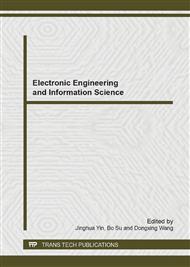p.381
p.386
p.392
p.398
p.402
p.409
p.413
p.417
p.422
The Research of Multi-Points Sources Signal Power Synthesis Technology
Abstract:
This article introduces the basic principle and theory model of the crossbeam space power synthesis, and presents the result of system simulation and analysis. The author has adopted random sparse disposal and compounded the multi-points sources of transmitted power in space, through controlling the accurate orientation of the beam, reaching the aim of enhancing power. Meantime, arbitrary distributed array has been adopted to make the system more practical.
Info:
Periodical:
Pages:
402-408
Citation:
Online since:
July 2014
Authors:
Price:
Сopyright:
© 2014 Trans Tech Publications Ltd. All Rights Reserved
Share:
Citation:


